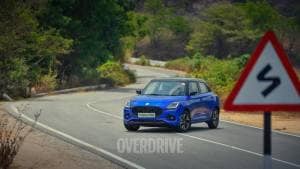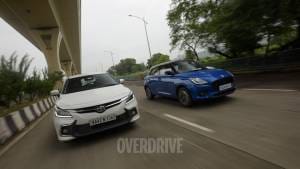Three generations of the Maruti Suzuki Swift compared
Hatchbacks have been the driving force behind the Indian motoring industry and Maruti Suzuki has always been the king of this body style and instrumental in helping millions of people realize their dreams of buying a four-wheeler. Of the numerous hatchbacks that the carmaker launched in the country, the 800, the Zen and the Swift stand out for achieving the fine balance between practicality and driving fun. But while the 800 and the Zen were ideal 'first' cars in their heyday, the Swift erased the notions of a hatchback being an entry-level car. By integrating equipment fit for a sedan in the convenient package of a hatchback, the Swift established the idea of a premium hatch.
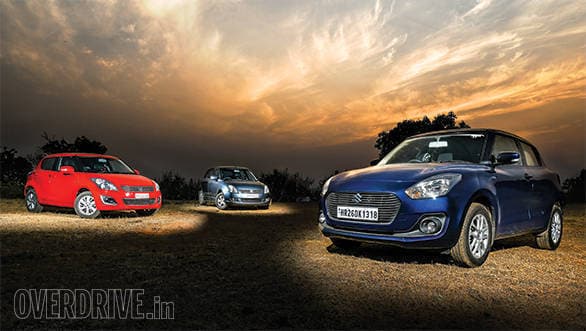
I still remember the long queue outside the Maruti Suzuki dealerships on the day the Swift was launched and that was a clear sign of things to come. Today, the India-spec Swift is in its third generation and we thought of bringing them together to relive the evolution of the iconic hatchback that we have come to love so much. The idea is not to highlight the generation gap, but it is more like choosing the best Batman - you can't pinpoint your favourite, because each one of them had something unique to wow the fans.
Design
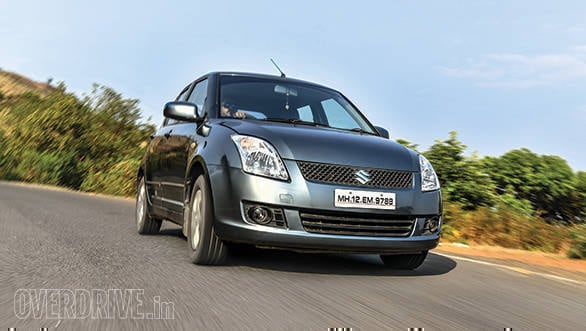
Imagine the Esteem without the sedan boot and that would be the original Swift sold globally. But the curvaceous hatchback that we know as the Swift today debuted in 2004 and made its way into India in 2005. It was unlike anything we had seen in the past and the unique styling was an instant hit - making sure that its peculiar silhouette was here to stay. The rounded off nose and buttresses led to the near-vertical design for the headlights and tail lights and all these unique elements gave the car a rather cute design.
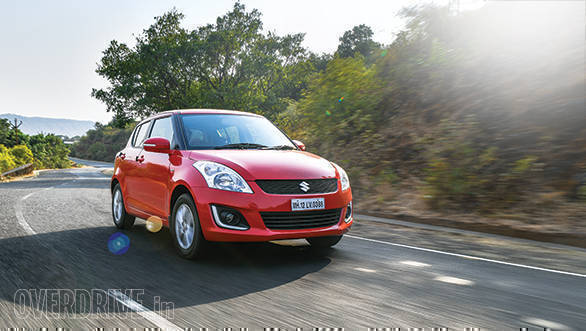
It all went sharper as the second generation model that debuted in 2011. The unique lobes in the tail lights of the first gen model, made way for a more crystalline detailing in the second. It literally made the taillights look like glitzy ornaments on the Swift's curvaceous body, while the sharper, pulled-back headlights, the receding roofline and its floating effect, courtesy of the black A-pillar, gave the car a sportier stance. Along the way, both the Swift models gave birth to compact sedans with the Dzire moniker - coincidentally replacing the three-box sedan that the Swift badge found its roots in.
 It is astonishing how the Swift has managed to stay true to its trademark form through the three generations and still managed to look fresh with every new iteration
It is astonishing how the Swift has managed to stay true to its trademark form through the three generations and still managed to look fresh with every new iteration
Fast forward to 2017 and the third-generation Dzire debuted wearing a face that gave a clear insight into what the new Swift would look like. As the all-New Swift dropped its covers for the Indian audience at the 2018 Auto Expo, it presented itself as a more mature premium hatchback. With the Baleno around, it isn't king of hatches at Maruti Suzuki, but holds its ground firmly with a sophisticated design that refines the original.
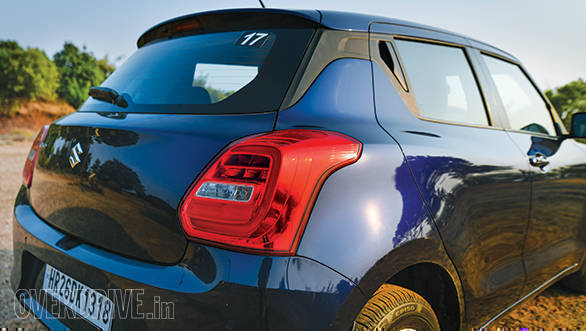
The headlights and tail lights look sleeker, while the fine detailing and the presence of LED lamps on the range-topping model make it look more sophisticated than before. It's cleaned up well too - there are fewer badges, the floating effect for the roof is enhanced further with all pillars camouflaged in black, the rear door-handles are integrated in the C-pillar for a two-door look, the trademark moustache grille makes has grown into a larger but sportier looking grill and the three-pot layout for the air-dams and fog lights makes way for a longer, single piece unit that also makes the new Swift appear wide-bodied.
I miss the trademark placement of the rear foglight in the bumper, but I like the sophistication of the design. That said, it isn't too mature like the Ben Affleck Batman. It's more like Nolan's Dark Knight - flirty and muscular.
Cabin
 The design of the new Swift, inside and out, takes a minimalist approach and looks classy in the bargain
The design of the new Swift, inside and out, takes a minimalist approach and looks classy in the bargain
The cabins of the Swift have always been quite inviting. Unlike the exterior though, these have seen a major evolution with every passing generation. After all, this is where the occupants spend most of their time and since the ideal Swift buyer has always been in the young age-group of 25-35, it was imperative for Suzuki to match or redefine trends. The black colour scheme has a cosy yet sporty vibe to it, while the amber backlighting adds a sense of occasion.
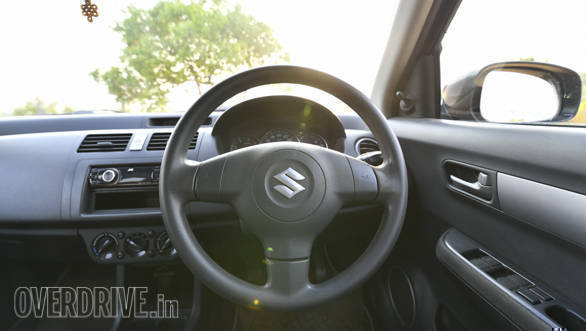
The Swift has always sported a deep profile for the dash which has enhanced the perception of a large and premium cabin, but the space has always seemed fit only for a nuclear family. In a country that loves travelling with the entire family, the Swift still managed to sell in record numbers (18 lakh units so far) despite its cramped cabin space. The second and the third generation model did improve on the rear seat by a fair bit, nevertheless.
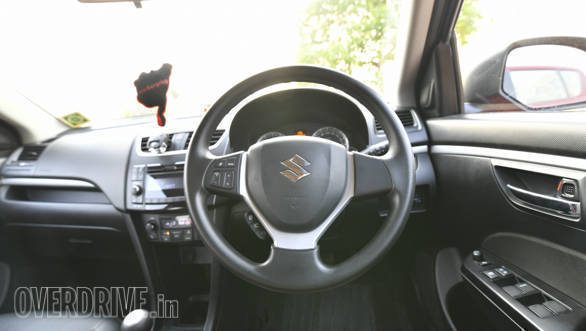
Going with the trends, the Swift would ace the competition on equipment too. The original touted double-DIN audio unit compatibility, while the second generation car was one of the first to properly integrate iPod compatibility - which in 2011 was unseen even on some of the luxury cars out there.
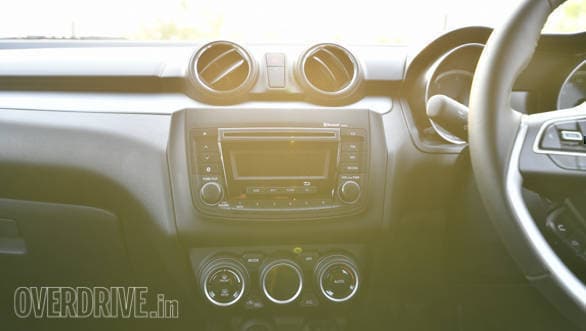
Ditto for the current Swift's Apple CarPlay and Android Auto functions. In a nutshell, the Swift has kept pace with the latest gadgets that attract its target audience. It even brought equipment like airbags, anti-lock brakes, isofix child mounts, USB ports, powered windows, powered mirrors, ORVM mounted turn blinkers etc. that set benchmarks for others to follow.
The affordable hot hatch
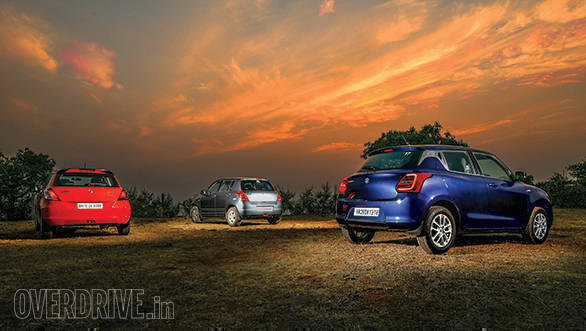 The new Swift isn't too mature like the Ben Affleck Batman. It's more like Nolan's Dark Knight - flirty and muscular
The new Swift isn't too mature like the Ben Affleck Batman. It's more like Nolan's Dark Knight - flirty and muscular
The beauty of the Swift isn't only about its unique form or inviting cabin, but also about the drivetrain choices it has made. The original debuted with a peppy 1.3l petrol motor! May not sound exciting today, but back in 2005 when most popular hatches were still running small, frugal engines the Swift's 1.3l engine was the ray of hope. Those with history or goals of building Zens with Baleno engines turned their attentions to the Swift for its roomier engine bay, stronger chassis and tauter suspension setup.
The 1.2l K-series petrol motor that was introduced later is a rev-happy, fun-loving motor too! The Swift became a modder's toy and the stuff of achievable dreams for young petrolheads. There was the Fiat Palio 1.6 too, which was received quite well - but the expensive cost of ownership and the appalling service network meant that it wasn't a threat for long.
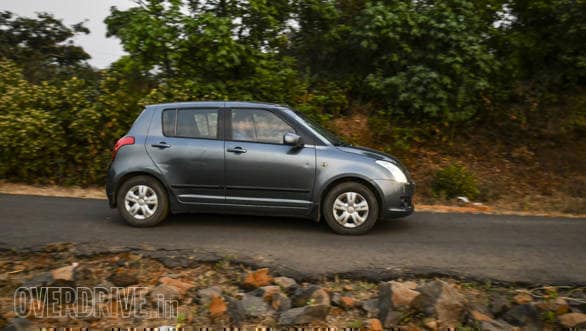
If anything, Fiat happened to be a friend in disguise. The struggling Italian struck a deal with Suzuki to supply diesel engines and the Swift struck gold! In 2007 the Swift diesel was born and it changed the definition of an affordable hot hatch.
Who would have thought that a diesel powered family car could give you the rush of a quick street racer - thanks to a light body, a factory-fitted turbocharger and a truckload of torque that would bury your head into the seats every time you crossed the 2,500rpm mark. You no longer needed access to a tuner or hours of garage time to build a quick car for the street. It was swift out of the box and could go much quicker with a simple plug-n-play remap!
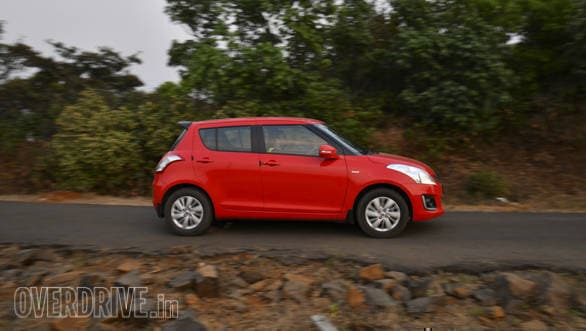
That 1.3l DDiS engine (or Multijet in Fiat lingo) became the most popular diesel engine in India and despite its unrefined character and the fabled turbo-lag, it continues to do duty even with the third generation Swift. It still manages to impress the same way it did back in 2007. Through this evolution, it has undergone tuning changes and while even Fiat and Tata tried to build affordable hot hatches around it (even with an updated 90PS tune) none could succeed like the Swift did.
The Swift's chassis was light and Suzuki tuned the gearbox to ensure a meaty mid-range which achieved a balance between economy and on-tap pulling capacity. It also had the notchy yet oddly likable gear-shifter feel. The second generation car lost up to 30kg over the original, while the all new model has shed further 80kg, thanks to the new Heartect platform.
Driving up the mountains in the three cars, we realised how the car has retained its character despite the addition of equipment, safety tech and creature comforts. There is a clear evolutionarily pattern too - the original was a bit understeery, lacked anti-lock brakes (were introduced later), had a fair bit of roll and the driving posture made you feel like you were riding atop the drivetrain.
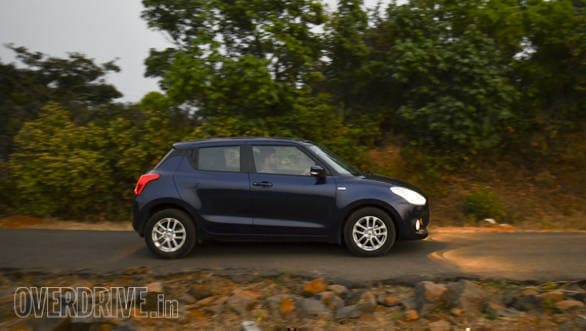
The second generation in comparison, seemed to put the driver in the thick of the action, had a slightly lighter but equally precise steering feel and better grip around bends despite initial roll and pitch. The third generation model refines the dynamics further, the lighter body makes for sharper turn-ins, the standard safety net adds more peace of mind, but the steering now feels a bit vague in a bid to feel conveniently light like some of the competition.
And in spite of these stark changes, all of them are edge-of-the-seat entertaining and that's the character that has made the Swift so likable over the years! Like I said - pinpointing the best would be difficult. I want a bit of all - the compact cabin and the communicative steering of the original, the sharp design of the second gen and the lightweight chassis, drivetrain refinement and safety net of the new Swift. That would be my ideal Batman. Or 'Batmobile' as my 10-year-old nephew likes to call my black 2011 Swift, every time he tells me that he wants one when he grows up.
Images: Akshay Jadhav
Also See:
2018 Maruti Suzuki Swift image gallery
Maruti Suzuki Swift vs Hyundai Elite i20 vs Maruti Suzuki Ignis
2018 Maruti Suzuki Swift launched at starting price of Rs 4.99 lakh
2018 Maruti Suzuki Swift: Five things you should know
2018 Maruti Suzuki Swift waiting period up to 6 to 8 weeks
Starts Rs 5.73 Lakhs
1197cc
Automatic
89.73
113
23.76 Kmpl
Starts Rs 5.5 Lakhs
1396cc
Manual
83
220
22.54 Kmpl
Starts Rs 4.89 Lakhs
1197cc
Automatic
82.93
113
20.89 Kmpl

